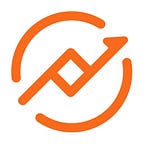Welcome to the Bixiaobao Blockchain Open Course! Our topic today is: what is the blockchain?
Let’s start with a story. Once upon a time, there was a village where whoever borrowed money had to keep his book by the village head to go through the village head to keep the books, but over time, many people began to question the village head.
Then someone came up with an idea of creating a public ledger. Whoever borrowed the money would keep track of it so that everyone could see. But how can we ensure the ledger is not tampered with?
A man by the name of Satoshi Nakamoto suggested that before the data could be recorded in the ledger, it had to be shared with other people, most of whom verified the data and found it to be correct. In this way, the correctness of the data in the ledger is ensured.
The essence of the blockchain is a distributed ledger (or database) that everyone can “keep track of”. In traditional finance, there is only one central bank responsible for keeping the books; in blockchain, everyone can keep the books. In a blockchain ledger, each page of the ledger is a block, the content of the page is the transaction record, and the page number is the block hash. Unlike the general ledger, the blockchain ledger each page contains data from the previous page, and all pages are linked to each other to form the blockchain.
Principle
The concept of blockchain was first introduced in 2008 by Satoshi Nakamoto (a pseudonym) in his paper Bitcoin: A Peer-to-Peer Electronic Cash System. How does the blockchain record data?
First, let’s look at the structure. Each block consists of a block header and a body. The block header consists of the parent hash, or prev hash, timestamp, difficulty target, and other information, while the block body consists of transaction records and other information. The block header is encrypted twice by the SHA256 algorithm to obtain the block hash, which is the identifier of the block, similar to an ID number, and is unique. Strictly speaking, a block hash is not included in the structure of a block.
It was mentioned above that miners are responsible for bookkeeping in a blockchain system, but why do miners keep track of their accounts?
In the blockchain system, bookkeeping can be rewarded with tokens. For example, bookkeeping in the Bitcoin network can be rewarded with Bitcoin, and bookkeeping in the Ethereum network can be rewarded with Ethereum, and the process of is also known as mining.
Since everyone can keep his account, how does the blockchain allocate bookkeeping rights?
In the Bitcoin system, a mathematical problem must be solved in order to obtain bookkeeping rights: the block hash. As mentioned above, a block hash is like a page number in a ledger, and is a unique identifier for each block. The Bitcoin system stipulates that the first person who figures out the latest hash will get the credit and the reward goes to the ledger keeper (also known as miner).
Due to the asymmetric encryption technology, it is hard to work out the hash value of a block, and it cannot be done by manual calculation, but only through the computer to try one by one (enumeration method). In order to increase computing power, bitcoin mining rigs have been upgraded from the earliest computer CPU mining rigs to graphics card ones, and the mining rig giant Bitmain came into being.
Now let’s discuss how blockchain transfers are done. If Bixiaobao wants to transfer 1 bitcoin to Jack Ma, the message will be broadcasted to the whole network after initiating the transfer then the miner will verify the message, and after successful verification, it will enter the transaction pool and wait to be packaged (similar to a bank transfer). Once a miner works out the hash value, the miner will have the right to package the message. The miner packages the transfer message, broadcasts it to other miners for validation, and a new block is generated after it is verified. At the same time, the record will be kept eternally in the block. The miner who just packaged the message is rewarded with the block’s Bitcoin.
Decentralization
The core of blockchain is decentralization. What is decentralization? For example, when we shop at Taobao, all information is stored on a central server, which is controlled by Taobao. If this server is attacked, our data may be lost. In contrast, decentralization stores data in many different servers around the world, owned by different miners (also known as nodes). In this way, even if one of these servers fails, our data remains intact. The essence of centralization is that a few people control the data, while the essence of decentralization is that many people control the data.
To put it simply, centralization is when only one person is in charge, and decentralization is when many people can be involved.
Taobao is controlled by a single company, so it is centralized. Bitcoin, on the other hand, is not controlled by any single individual or company, but is maintained by countless miners around the world and is therefore decentralized.
The concept of blockchain has received widespread attention from all around the world since it came out, and is now considered a key technology of the Fourth Industrial Revolution with broad application prospects. So what are the characteristics of blockchain? What exactly can blockchain do? To find the answers, please check them out in the next issue.
Blockchain Open Course is an introductory course on blockchain by BiXiaoBao. For more blockchain knowledge, follow the column of Bixiaobao.
